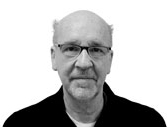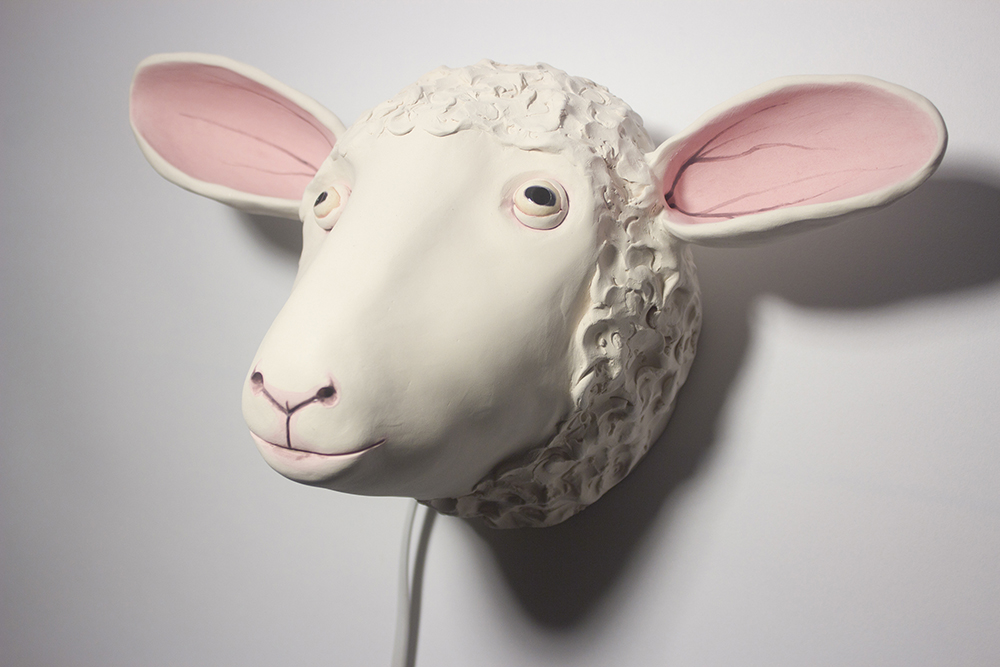
PAUL KRAINAK
The sculptor uses mostly white earthenware or stoneware, preferring its blankness because it makes a “good canvas to work on and references the starkness of labs and hospitals.” She exhibits color with restraint, preferring subtle underglazes and slips to avoid objects from becoming too precious.
Consequently, her installations have subtle references to sterilized medical equipment and shaved bodies awaiting experimental procedures. She raises concerns about our vulnerability and complicity with a growing risk of abuse as our appreciation of what is possible or natural becomes cloudier.
Her ceramic sculpture and installations are motivated by the evolution of medical practice that merge otherwise divergent genetic domains and convey how much exploitation of animals is obscured or ignored. Of course ritual medicinal practice with animals has a long history. A virtual cross-pollination of species by various indigenous populations presaged contemporary zootherapies and suggests that the practice is an indelible link in our cultural DNA.
For generations people have treated physical ailments like joint, bone and muscle pain with the body fats of animals like tigers, eagles and snakes. The bile of other animals has been used to soothe stomach, head, teeth and even childbirth. Malaria sufferers have been nursed with tortoise shell extract and the flesh of roasted bat wings fed to children to inhibit bed-wetting. Animals have been used for a variety of therapies that correlate agriculture, traditions of craft, and histories of speech and they remain a component of traditional knowledge of many tribal communities worldwide.
Along with a tone of alarm Dieffenbach’s work has been shaped by a wry humor, a sense of indignation, and wonder about the uncanny images of research and practice that appear as radical and irrational as ancient practices. The research includes breeding chimeras – part human, part animal, designed to be harvested for organ transplants, biotherapy or immunotherapy.
Xenotransplantation, the transfer of organs or tissue between members of different species, addresses the shortage of organs available to humans for extending “life,” but it reads like science-fiction.
Dieffenbach taps into a fecund cultural dimension suspended between folk medicine, pioneering technology and vernacular art. Ceramics is an apt medium to grasp the breadth of the subject as it has inherited a potent ritualistic and symbolic frame. Clay moves in equal parts utility and representation, being the oldest and most widespread industry on earth with a fundamental connection to the aboriginal and archaic.
The conceptual framework of Dieffenbach’s artwork also calls to mind our increased faith in artificial intelligence and robotics to substitute for normative existence. Her own charismatic hybrids like “Aunt Dolly” parody the state of health care as a scent of mock surrender also hangs in the gallery. Her electric talking sheep-head trophy cautions us about collateral damage in the wake of surgeons’ next Promethean hunting party.
Angela Dieffenbach is a Bradley University alumna who currently directs the ceramic program at the Hyde Park Art Center in Chicago.


Recent Comments